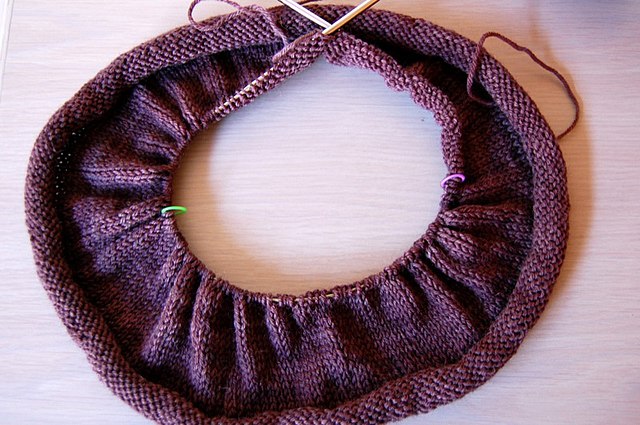In knitting, a gather draws stitches closer together within a row of knitting. Common methods include:
- In binding, a yarn loop is passed over 2 or more stitches in the same row (usually adjacent to the binding loop); also known as a pullover stitch.
- In clustering, the yarn is wound laterally around a set of stitches in the same row, possibly several times; also known as a wrap stitch.
- Smocking is a sewing or embroidery technique in which the tiny pleats are drawn together with thread or yarn. Before the development of elastic, smocking was used to provide a stretchable, flexible panel of fabric.

Related techniques

In the sewing technique ruching (pronounced /ˈruːʃɪŋ/, ROO-shing also spelled rouching), a large number of increases are introduced in one row, which are then removed by decreases a few rows later. This produces many small vertical ripples or "ruches" in the fabric, effectively little pleats. The technique of shirring produces a similar effect by gathering the fabric in two parallel rows (not necessarily horizontal), usually by smocking.
References
- Hiatt, June Hemmons (1988). The Principles of Knitting. Simon and Schuster. pp. 55–56, 82–83. ISBN 0-671-55233-3. OCLC 17325110.
Wikiwand in your browser!
Seamless Wikipedia browsing. On steroids.
Every time you click a link to Wikipedia, Wiktionary or Wikiquote in your browser's search results, it will show the modern Wikiwand interface.
Wikiwand extension is a five stars, simple, with minimum permission required to keep your browsing private, safe and transparent.
